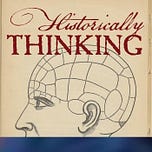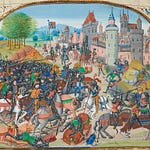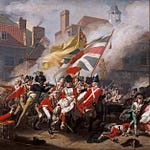Originally published on April 8, 2024 (Episode 355)
Introduction
In the antebellum United States, the sudden arrival of steam power—through steamboats, railroads, and engines—transformed not only transportation but also the imagination. At a pivotal moment in Chapter 17 of Nathanael Hawthorne’s House of the Seven Gables, two of his protagonists escape from haunted Salem, Massachusetts, and are whirled away from its power by the even greater power of steam: “…Looking from the window, they could see the world racing past them. At one moment, they were rattling through a solitude; the next, a village had grown up around them; a few breaths more, and it had vanished, as if swallowed by an earthquake. The spires of meeting-houses seemed set adrift from their foundations; the broad-based hills glided away. Everything was unfixed from its age-long rest, and moving at whirlwind speed in a direction opposite to their own.”
From Hawthorne’s House of the Seven Gables to a Texas teenager’s diary, Americans wrote about the iron horse as though it were both natural and otherworldly at one and the same time, a force that not only uprooted landscapes, and raced across them, but unsettled time itself. Aaron W. Marrs explores how steam became a cultural metaphor as well as a practical revolution in his book The American Transportation Revolution: A Social and Cultural History (Hopkins, 2024).
About the Guest
Aaron W. Marrs is a historian at the U.S. Department of State. His previous book was Railroads in the Old South: Pursuing Progress in a Slave Society (Hopkins, 2009). The views expressed in this conversation are his own and not those of the State Department or the federal government.
For Further Investigation
The Website of Aaron W. Marrs—titled “Frederick Jackson Turner Overdrive”, a fantastic name for your band or fantasy football team
Aaron W. Marrs, The American Transportation Revolution: A Social and Cultural History (Hopkins, 2024)
—, Railroads in the Old South: Pursuing Progress in a Slave Society (Hopkins, 2009)
Kelby Ouchley, “Steamboat Princess Disaster”, 64 Parishes
Mark Aldrich, Death Rode the Rails: American Railroad Accidents and Safety, 1828–1965 (Hopkins, 2009)
Michael J. Connolly, Capitalism, Politics, and Railroads in Jacksonian New England (University of Missouri, 2003)
Cynthia Kierner, Inventing Disaster: The Culture of Calamity, from the Jamestown Colony to the Jonestown Flood (UNC, 2024)
Related Episodes
“Inventing Disaster”, with Cynthia Kierner
💬 Listen & Discuss
When steam shrank time and space, did it also reshape how Americans saw themselves and their nation? Share your thoughts in the comments—and maybe your favorite train or steamboat story too.











